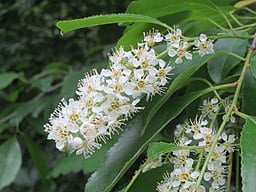Seaside Goldenrod (Solidago sempervirens)

Alternative Names
Salt-marsh Goldenrod and Northern Seaside Goldenrod
Description of Seaside Goldenrod (Solidago sempervirens)
Seaside Goldenrod (Solidago sempervirens), a member of the Asteraceae (Aster Family), is a herbaceous perennial that grows 2 to 8 feet tall and has yellow flowers that bloom in the summer and fall from August to November. The alternate, simple leaves are lanceolate to oblanceolate in shape and have entire margins. They are also waxy, which is an adaptation to the coastal conditions. This plant grows in zones 3-10 and likes open areas with full sun. More information about this plant can be found on this blog post.
Hosted Species
Wavy-lined Emerald

Nectar Species
Many butterflies, bees, wasps, flies, ants, and beetles use this plant as a nectar source. Birds, such as the Eastern Goldfinch, eat the seeds, and some mammals eat the stems and and leaves. Goldenrods in general are one of the most important nectar plants in the fall.
Habitat
This goldenrod grows in sandy areas of the coast, including beaches, salt-marshes, and pinelands.
Range of Seaside Goldenrod (Solidago sempervirens) in the United States and Canada
Interesting Facts
The genus name, Solidago, comes from the Latin for Solidus and ago and refers to the medicinal healing properties.







Reviews
There are no reviews yet.